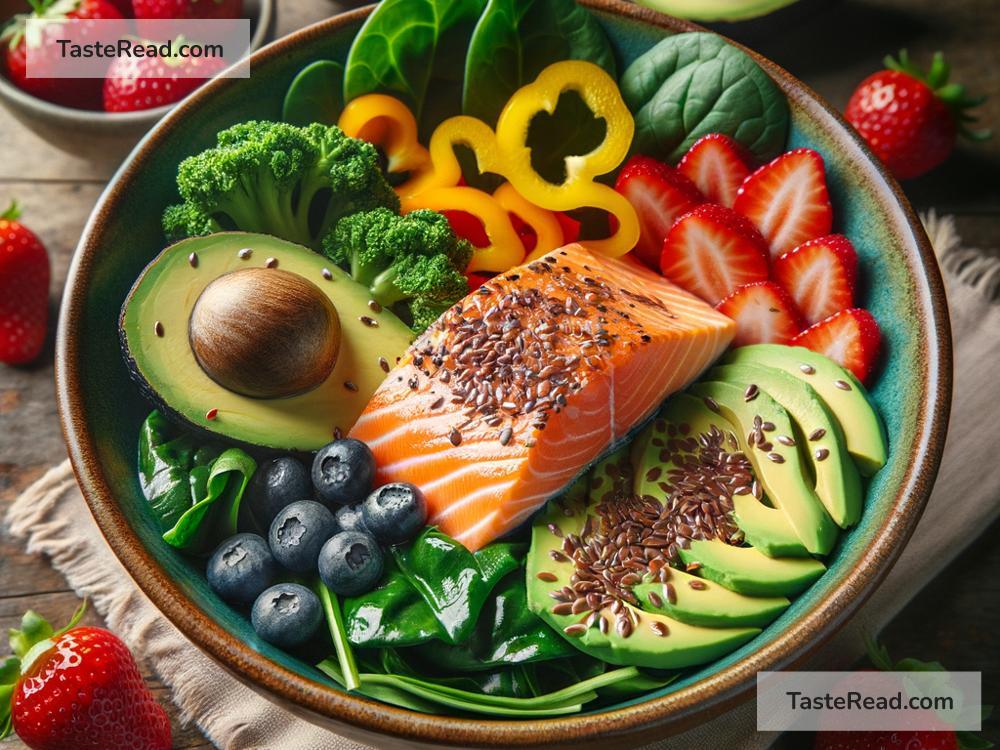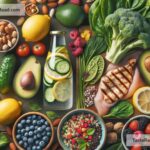Top Foods to Boost Vascular Health
Your vascular system, which includes your blood vessels, arteries, and veins, plays a critical role in keeping your body running smoothly. It transports oxygen and nutrients to organs and tissues, while carrying away waste products like carbon dioxide. Keeping your vascular system healthy leads to better circulation, a lower risk of heart disease, and overall improved wellness. Many foods can help support vascular health, and adding them to your diet is a simple way to reduce your risk of problems like high blood pressure, blood clots, and atherosclerosis (hardening of the arteries). In this blog, we’ll explore some of the best foods for improving vascular health—and they’re not just good for your heart; they’re delicious, too!
1. Leafy Greens
Leafy greens like spinach, kale, and arugula are nutrient powerhouses. They are rich in nitrates, compounds that help dilate blood vessels and improve blood flow. These greens are also packed with potassium, which helps regulate blood pressure by balancing out sodium levels in your body.
How to eat them: Toss leafy greens into salads, smoothies, or soups. Add them to omelets or sauté them as a quick side dish!
2. Fatty Fish
Fatty fish, such as salmon, mackerel, sardines, and tuna, are excellent sources of omega-3 fatty acids. These healthy fats reduce inflammation in the body and help lower triglyceride levels, which are fats linked to heart disease. Omega-3s also prevent blood clotting and improve arterial flexibility, which is essential for smooth blood flow.
How to eat them: Enjoy grilled or baked fish as your main dish, mix canned salmon into a salad, or snack on smoked mackerel with whole-grain crackers.
3. Berries
Blueberries, strawberries, blackberries, and raspberries are not only sweet treats—they’re also full of antioxidants. A specific type of antioxidant called anthocyanins is particularly beneficial for vascular health. Anthocyanins help protect the lining of your blood vessels and prevent the buildup of plaque that can lead to atherosclerosis.
How to eat them: Add berries to oatmeal, yogurt, or smoothies. They also make a great topping for healthy desserts or a refreshing snack on their own.
4. Whole Grains
Whole grains like oats, quinoa, and brown rice are high in fiber, which helps lower cholesterol. When bad cholesterol (LDL) builds up in the bloodstream, it can clog arteries and restrict blood flow. Whole grains also have magnesium, which helps relax blood vessels and supports healthy circulation.
How to eat them: Swap white rice for brown rice, and choose whole-grain bread or pasta. Kickstart your morning with a hearty bowl of oatmeal and top it with fruits for added vascular benefits.
5. Nuts and Seeds
Nuts and seeds are full of healthy fats, fiber, and plant compounds that promote vascular health. Walnuts, for example, are rich in omega-3 fatty acids, while almonds contain vitamin E, which protects your arteries from damage. Flaxseeds and chia seeds are also excellent sources of omega-3s and fiber.
How to eat them: Sprinkle nuts and seeds onto salads, yogurt, or oatmeal. Grab a small handful as a quick snack, or blend them into smoothies and nut butters.
6. Garlic
Garlic is not just for flavor—it’s a natural powerhouse for improving blood flow. It contains a compound called allicin, which helps relax blood vessels and reduce blood pressure. Regular consumption of garlic has been linked to better circulation and reduced risk of cardiovascular diseases.
How to eat it: Add minced garlic to pasta sauce, stir-fries, or roasted vegetables. If you’re brave, you can even eat it raw for maximum benefit—though its strong flavor might take getting used to!
7. Dark Chocolate
Good news for chocolate lovers: dark chocolate can be good for your vascular health! Cocoa contains flavonoids, antioxidants that help widen blood vessels, improve circulation, and reduce blood pressure. Just make sure to choose dark chocolate with at least 70% cocoa content and eat it in moderation.
How to eat it: Enjoy a small square of dark chocolate as a dessert or mix grated dark chocolate into oatmeal or smoothies.
8. Citrus Fruits
Oranges, grapefruits, lemons, and limes are rich in vitamin C and flavonoids, both of which improve vascular health. Vitamin C helps strengthen blood vessel walls, making them more flexible and less prone to damage. Flavonoids, on the other hand, reduce inflammation and improve blood flow.
How to eat them: Sip fresh citrus juice, or add slices of oranges or grapefruit to salads and yogurt. They also make a refreshing snack when eaten on their own.
9. Beets
Beets are loaded with nitrates, which the body converts into nitric oxide, a compound that relaxes blood vessels and improves circulation. Studies show that drinking beet juice can lower blood pressure and enhance blood flow in just a few hours.
How to eat them: Roast beets as a side dish, add them to salads, or blend them into smoothies or juices for a vibrant boost.
10. Avocado
Avocados are rich in heart-healthy monounsaturated fats that help lower bad cholesterol. They also contain potassium, which is essential for maintaining vascular health by regulating blood pressure and blood flow.
How to eat it: Spread avocado on whole-grain toast, add slices to salads or sandwiches, or blend it into creamy dips like guacamole.
Conclusion
Eating the right foods can do wonders for your vascular health. By incorporating leafy greens, fatty fish, berries, whole grains, nuts, seeds, garlic, dark chocolate, citrus fruits, beets, and avocados into your diet, you can help improve blood flow, lower blood pressure, and protect your arteries from damage. Your vascular system works tirelessly to keep your body healthy—give it the nutrients it needs to perform at its best!


